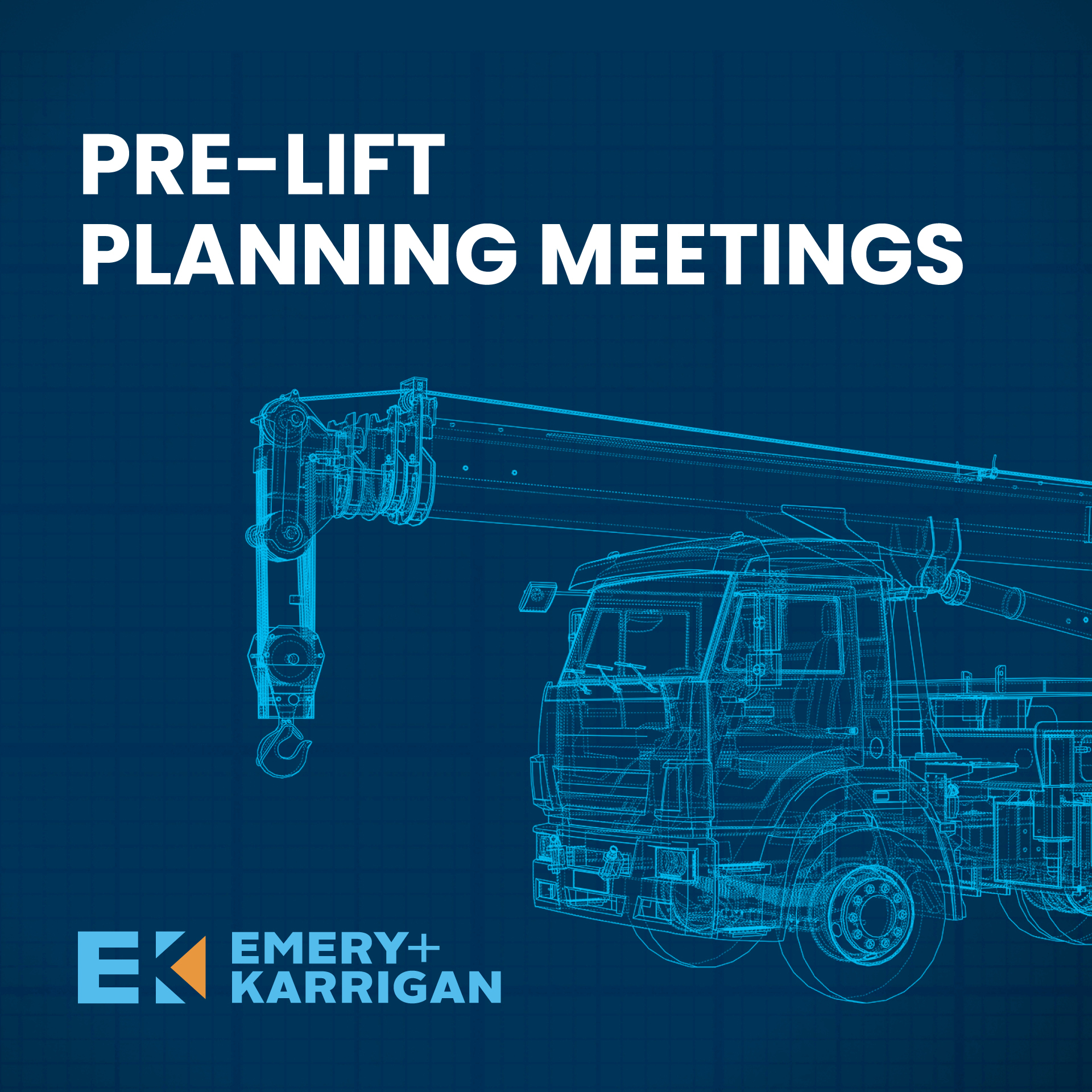
How to Run a Pre-Lift Planning Meeting: A Guide for Crane & Rigging Companies
Emery & Karrigan, Inc.
In crane and rigging operations, the lift doesn’t start when the crane booms up, it starts in the planning room. The Pre-Lift Planning Meeting is your opportunity to prevent costly errors, reduce liability, and reinforce a culture of safety before boots even hit the ground. It’s not paperwork for the sake of compliance, it’s a proactive tool to protect your crew, your gear, and your business.
At Emery & Karrigan, we work with companies that treat risk management as a competitive edge. Here’s how to run a Pre-Lift Planning Meeting that actually moves the needle.
Step 1: Get the Right People in the Room
A successful lift requires input from the people executing it. Include:
- Crane operator
- Site supervisor
- Signal person
- Riggers
- Safety manager (if applicable)
- Project engineer or general contractor liaison
Everyone involved in the lift should have a voice in the plan. This isn’t a top-down directive, it’s a collaborative effort to inform and have open dialogue with everyone on your team. Like everything in the crane and rigging industry, communication and clarity are key.
Step 2: Review the Scope of Work
Define the basics:
- What are we lifting?
- Where is it going?
- When will it take place?
- What equipment will we use?
Be specific. Even small variances in weight, terrain, or overhead clearance can change your strategy, and surprises can have long term implications.
Step 3: Walk Through the Lift Plan
Now, dig deeper:
- Load weight and dimensions
- Center of gravity and rigging configuration
- Lift radius and crane capacity
- Ground conditions and matting
- Environmental factors (wind, visibility, temperature)
- Personnel roles and communication signals
Use diagrams, lift plans, or 3D modeling if available. Visual aids make expectations clear and reduce misunderstandings.
Step 4: Identify and Mitigate Jobsite Hazards
This is where risk management comes to life. Walk through potential hazards and mitigation strategies:
- Overhead power lines
- Nearby traffic or foot traffic
- Soft or uneven ground
- Limited access or egress routes
- Working near existing structures or utilities
Document mitigation measures (e.g., spotters, flaggers, temporary road closures, ground pressure calculations).
Step 5: Establish Emergency Procedures
If something goes wrong, everyone should know:
- Who takes charge?
- Where is the nearest emergency access?
- Who is trained in first aid?
- How is communication handled during a crisis?
Emergency planning is a key component of any OSHA-compliant lift, and can be a major differentiator in how your insurance partner assesses risk.
Step 6: Review Responsibilities and Communication Protocols
Clarify roles:
- Who gives the “all clear”?
- Who’s in charge of each rigging connection?
- What hand signals or radios will be used?
- Who stops the lift if something looks off?
- Make sure everyone understands their authority to pause or stop the lift if they see something unsafe. Empower your crew.
Step 7: Document Everything
Capture:
- Names and roles of attendees
- Key details of the lift
- Identified hazards and controls
- Emergency contact info
- Sign-offs confirming understanding
This documentation isn’t just good practice, it protects your business in case of audits, claims, or disputes.
Bonus Tip: Use Your Risk Assessment Score as a Baseline
At Emery & Karrigan, we help crane companies quantify safety performance with a 60+ point risk assessment score. Use this data in your pre-lift meetings to benchmark improvement over time and show insurers you're actively reducing exposure.
Takeaways:
A Pre-Lift Planning Meeting isn’t a box to check. It’s your best chance to prevent injury, damage, and downtime. When you make planning part of your culture, your jobs run smoother, your crew stays safer, and your reputation as a reliable operator grows.
Need help creating a standardized lift plan template or improving your jobsite risk scores? Emery & Karrigan can help you formalize the process and make safety a sales advantage. Contact Us

